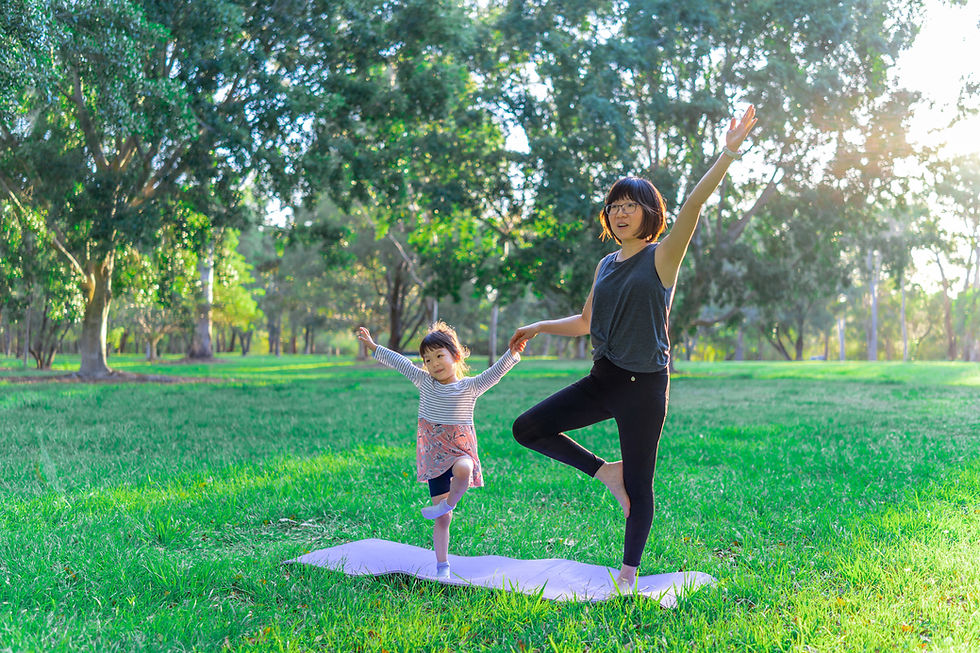How Occupational Therapy Can Help With Speech Delay In Children
- Sherwin Uy

- Dec 3, 2019
- 4 min read
Updated: Apr 5, 2023

Occupational Therapy and Speech Therapy: Why We Need Each Other By: Jessica Hunt, OTR/L Speech and Occupational Therapy overlap in many areas, to include feeding, swallowing, cognition, body posture and awareness, and others.
In our current medical model, the common practice is to divide the child into “pieces”: physical therapy treating the lower body, occupational therapy treating the upper body and speech therapy treating the mouth (throat, tongue, lips, jaw).
If only it were that simple. It is easy to forget that the body is connected and what we do with one part of the body directly affects another part of the body. The association between speech and language skills and occupational therapy is a perfect example of this interrelatedness.

Occupational therapy has a lot more to offer children who have speech and language delays than just swinging to release energy or acquaint them with new textures. Many areas of difficulty that are addressed by an OT relate directly to a child’s speech and language development.
However, our proprioceptive (sense of body position) and vestibular (balance) functions are really what tie things all together. Occupational Therapists working from a sensory integration frame of reference focus upon how a child is able to take in information from the environment, organize that information and then respond and adapt to their surroundings.
We can think about a child’s development as an inverted triangle with sensory systems on the bottom, precariously balancing all the rest of our higher-level functions, including speech and language skills.
Early sensory experiences help to shape our motor skills and how we respond to our environment. The input we receive early in life is extremely important. As infants, the connection between the hand and the mouth is one of the first things we learn. We then develop oral motor reflexes like rooting and sucking and eventually begin to regulate ourselves. Moving our arm and hand provides feedback from our muscles and joints and begins to give us our sense of “self.”

When an infant cries and their needs are met as a result, this is our earliest back-and-forth interaction and the beginnings of communication. The vestibular system receives information from within our inner ear, which travels in two directions: up to the cochlea and the visual system and down to our proprioceptive and tactile systems. This input helps maintain balance, affects our ability to sit still, and controls eye movement. The vestibular system coordinates and controls our movements, telling our body when we are moving, how fast or slow we are moving, and when we stop and start moving.
Similarly, speech production involves motor control and motor planning of fine motor muscle movements. The vestibular system works closely with the auditory system; both receive information from the receptors in the ear, and are separated anatomically by only a bony labyrinth. When sound passes through our ear, it creates vibration. This movement is what our body understands, not the sound itself. If a child’s body struggles to understand this movement, they may also struggle to process sounds. We need to understand what we hear before we can repeat it. If the vestibular system is under or over responsive, the input that these nerves receive is compromised, affecting the information the muscles of the mouth and eyes receive.

The proprioceptive system is the “position sense,” the unconscious awareness of sensations provided by our joints, muscles, tendons, and ligaments. If a child has poor awareness throughout their body due to poor proprioceptive processing or low tone, they are going to have a much harder time coordinating their mouth muscles as well. To effectively communicate, a child needs to attend, maintain control of their body, and understand where their body is in space. Postural control is also regulated by the information that the vestibular and proprioceptive systems sends to our muscles. This can and does affect a child’s ability to use their breath support muscles for speech.
The coordination of our vestibular, visual, and auditory systems is how we begin to understand space and time. We use this knowledge for higher-level language skills like structure, sequencing, timing, and turn-taking in conversation.
Once we are able to relate to the space around and within ourselves, we can begin to understand the world outside. We then become aware of personal space, facial expressions and cues, all of which greatly impact social skills.







Comments